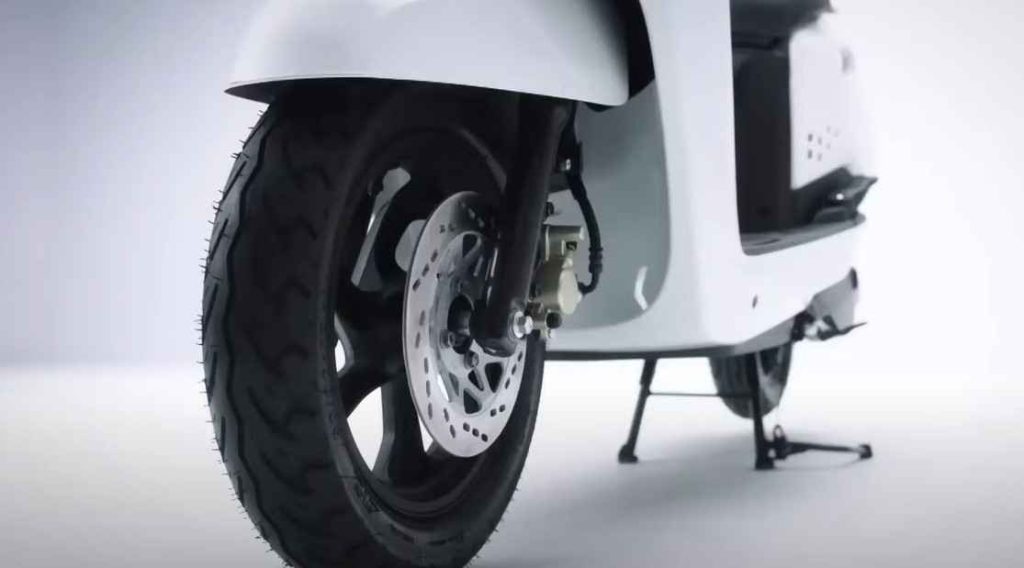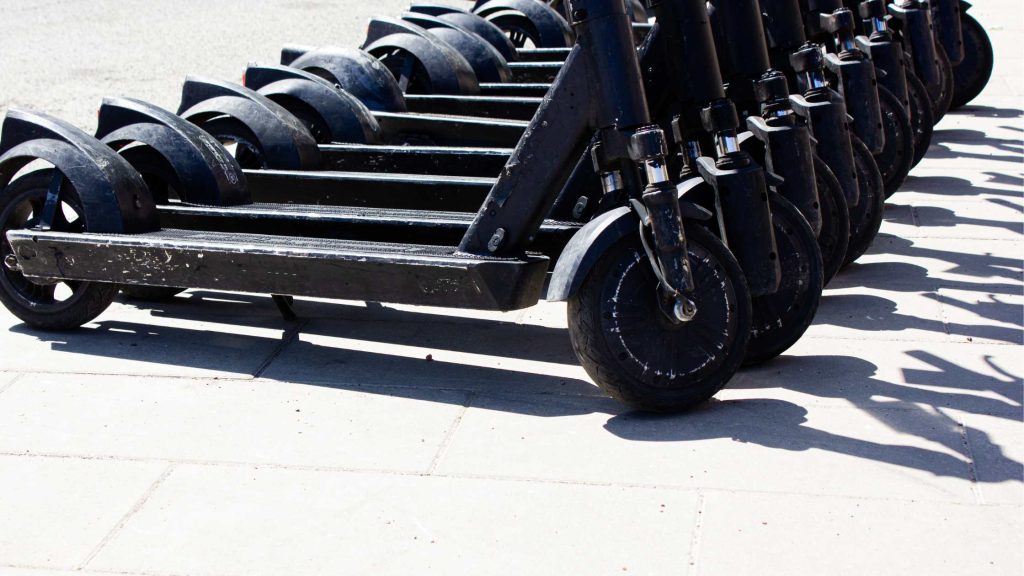Can Escooters Be Profitable? Yes, Escooters can be profitable as a business, particularly with the right strategy and market conditions. Efficient operations and high demand play key roles in their profitability.
Electric scooters, commonly referred to as Escooters, have surged in popularity in urban areas, presenting a viable business opportunity.
With the rise of eco-conscious consumers and cities looking to reduce traffic congestion, Escooter rentals have become an attractive option.
They provide an affordable last-mile transportation solution, complementing public transit systems.
Companies that enter this market must focus on factors like strategic placement, user-friendly services, and maintenance efficiency to succeed.
Tailoring the business model to cater to the needs of specific communities can also enhance profitability.
Moreover, aligning with local regulations and promoting safety can bolster customer trust and ensure long-term growth.
Hence, with thoughtful planning and robust execution, an eScooter business has the potential to be quite lucrative.
Table of Contents
ToggleThe E-scooter Phenomenon
Electric scooters, e-scooters, have changed city travel. Once a novelty, now they are everywhere. They offer a quick way to move around. Many choose e-scooters over cars. They are good for the planet too. With rising use, comes a big question. Can escooters be profitable? Let’s explore.
Surge In Urban Adoption
Cities love e-scooters. Busy streets are now clear. There is less noise. Air is cleaner too. People find them easy for daily use. They save time in traffic. Many cities now have e-scooter rentals. Companies offer them for a small fee. This is why they are now so common.
- Less traffic: E-scooters make city travel faster.
- Green transport: They help reduce pollution.
- Rental models: Easy access through rental apps.
Shift In Personal Mobility

People are choosing differently. They want fast and easy ways to travel. E-scooters are just that. They are also fun. They do not cost much. You do not need to find parking. They can go where cars cannot. This change is big for personal travel.
- Cost-effective: Save money on gas and parking.
- Accessible: Easy for everyone to start riding.
- Flexible: Reach places cars can’t easily go.
Economics Behind E-scooters
The arrival of e-scooters in urban landscapes has sparked debate. Can these sleek devices be not just a modern convenience but also a source of profit? Let’s zoom in on the economics that fuel the e-scooter industry.
The potential for profitability hinges on two critical areas: the investments made and the costs of operations, as well as the various channels through which money flows back into the business.
Initial Investment And Operational Costs
Launching an e-scooter business comes with a significant upfront cost. Expense breakdowns typically include:
- Purchase of the fleet: Buying the e-scooters is the main cost.
- Maintenance: Regular repair work keeps scooters rolling.
- Charging: Powering scooters for daily use requires energy.
- Storage: Safe places are needed to store scooters overnight.
- Software: Tech to manage rentals is vital.
- Permits and legal fees: Licenses to operate are mandatory.
Operational costs, including labor for repositioning scooters, customer support, and insurance, must be factored in for a true sense of the financial landscape.
Revenue Streams Unpacked
E-scooter businesses reap profits from several sources. These diverse streams include:
| Revenue Stream | Description |
|---|---|
| Ride charges: | Users pay per minute or per ride. |
| Subscription services: | Regular users pay a monthly fee for unlimited access. |
| Advertising: | Space on scooters is sold for ads. |
| Data monetization: | User data generates insights sold to third parties. |
Businesses also explore partnerships and city incentives to bolster their revenue patterns. Balancing the costs against these streams is key for a profitable venture.
The Sustainability Angle
Exploring The Sustainability Angle, we delve into how e-scooters balance being eco-friendly and profitable. We consider the full life cycle of these modern modes of transport. It’s essential to measure impact, not just in revenue but also on our planet.
Eco-friendliness Vs. Profitability
E-scooters lead the charge in urban eco-mobility. Companies producing them eye a dual goal:
- Reducing carbon footprints
- Ensuring healthy profit margins
Often, what’s good for the planet aligns with good business. E-scooters replace gas-guzzling cars. They ease traffic congestion. They lower greenhouse gas emissions. All the while, companies find these light, electric vehicles cost-effective to produce and maintain.
Life Cycle Of An E-scooter
Let’s unpack the life cycle of an e-scooter:
- Manufacturing: Materials and production methods matter. Companies choose sustainable options.
- Distribution: Efficient distribution networks reduce emissions related to transport.
- Usage: Zero emissions during operation make e-scooters a green choice.
- Maintenance: Repairs extend life spans, minimizing waste.
- Recycling: End-of-life programs recycle parts, keeping materials in circulation.
An e-scooter’s life span is crucial to its sustainability score. Longer-lasting scopes maximize environmental and economic gains. Companies focus on durable design to make the whole cycle sustainable.
Key Players In The E-scooter Market
The landscape of urban mobility is ever-changing, and e-scooters play a pivotal role in this transformation. Recognizing the key players in the e-scooter market unlocks insights into who shapes the future of short-distance travel.
Established brands and enterprising startups jostle for influence, while savvy investors keenly follow market trends to fund potential industry leaders.
Dominant Brands And Startups
Several brands have emerged as heavyweights in the e-scooter sector. Companies like Bird and Lime are often at the forefront, boasting extensive fleets across multiple cities globally. They established early market dominance, providing high availability and convenience.
Up-and-coming startups such as Spin and Skip closely challenge the frontrunners, introducing innovative features and user-friendly platforms.
These emerging entities bring fresh competition, continuously driving the market forward.
Investor Interest And Funding
Investor interest in the e-scooter market remains high, signaling a robust future for the industry. Startups have attracted substantial funding rounds, with established players also securing significant investments for expansion.
Reports show financing numbers in the hundreds of millions, affirming the confidence venture capitalists and angel investors place in e-mobility. Table A below illustrates recent funding achievements for e-scooter market trailblazers.
| Company | Latest Funding Round | Total Investment |
|---|---|---|
| Bird | $275 Million (Series D) | $765 Million |
| Lime | $170 Million (Series E) | $765 Million |
| Spin | $125 Million (Asset-backed debt) | $150 Million |
| Skip | $100 Million (Series A) | $126 Million |
Such significant financial backing underlines a growing belief in e-scooters as a profitable venture with a vast market potential.
Challenges Faced By E-scooter Companies
E-scooter companies are zooming into cities around the globe. They promise a green, easy way to travel. But rolling smooth isn’t always easy. Companies face big challenges. Let’s dive into what’s slowing them down.
Regulatory Hurdles
Laws can be complex. Cities have different rules. E-scooter firms must navigate these laws. They often face restrictions. This means they can’t operate freely everywhere.
Obtaining permits is tough. There are caps on scooters. Companies must work closely with city officials. They aim to keep both riders and pedestrians safe.
Maintenance And Vandalism
Making sure e-scooters work well takes time and money. Repairs are often needed. Scooters out in the streets can get damaged.
Some may be vandalized. This can reduce the number of scooters ready to ride. Companies need to set up teams. These teams fix and check scooters regularly. This helps keep e-scooters safe and ready to go!
Technological Advancements

Escooters are zooming into the future with cool tech updates. These changes are making rides smoother and wallets happier. Let’s dive into the latest tech tricks that keep escooters rolling longer for less money.
Battery Life And Cost Efficiency
Keeping an escooter powered up is key to its success. New batteries are stealing the spotlight. They last longer and cost less to replace. This means more ride time and money saved.
- Longer Lasting: Today’s batteries keep escooters running for more miles.
- Fast Charging: Quick power-ups mean less waiting and more riding.
- Eco-Friendly: Batteries made with newer, greener technology help the planet.
| Old Battery | New Battery |
|---|---|
| Short life span | Extended life |
| Slow to charge | Speedy recharge |
| Expensive replacements | Cost-effective |
Smart Features And User Experience
Tech is turning escooters into smart scooters. Riders get more control and fun with each trip. Let’s peek at some nifty features
- GPS Tracking: Getting lost is yesterday’s problem. GPS helps find the best routes.
- Anti-Theft: Lock your scooter with your phone to keep it safe.
- Mobile Apps: Checking battery life or finding a parking spot is just a tap away.
These smart add-ons make escooter trips fun, easy, and secure. Riders love them, and so do escooter businesses.
Case Studies Of Successful E-scooter Models
The surge in urban traffic and the shift toward eco-friendly transportation have paved the way for e-scooters. Cities worldwide are witnessing this revolution, with several companies rolling out their e-scooter models.
But do these ventures stand to gain profits? Looking at case studies, we’ll discover the winning formulas behind thriving e-scooter businesses.
Examples Of Profitable Ventures
Strategic partnerships and efficient operations underscore the success of profitable e-scooter ventures. Companies that ensure strong collaboration with city officials tend to thrive. Let’s delve into the real-world examples that have shaped the industry.
- Bird: One of the first on the scene, their secret lies in dense urban deployment and a slick user app.
- Lime: By expanding globally and optimizing scooter lifespan, Lime has shown profitability is within reach.
- Spin: Focusing on select markets for deeper penetration has earned Spin a profitable spot.
These brands demonstrate that careful planning and customer-focused strategies can lead to successful outcomes. They focus on reliability, accessibility, and a positive user experience.
Adapting To Market Changes
E-scooter businesses flourish by staying agile and responsive to market dynamics. Seasonal usage patterns, regulatory environments, and technological advancements dictate the need for adaptability.
Modern technology, like GPS for theft prevention and data analytics for maintenance scheduling, gives a competitive edge. Firms that pivot their strategies to align with city regulations often see sustained profit margins.
| Company | Adaptation Strategy | Outcome |
|---|---|---|
| Bird | Servicing scooters in-house | Reduced operational costs |
| Lime | Deploying swappable batteries | Less downtime, more rides |
| Spin | Collaborating with cities | Legal compliance, market stability |
These businesses show resilience by modifying their operations to better suit the dynamic landscape of urban mobility. Efficiency and adaptability are vital factors for sustaining profitability in the e-scooter industry.
Customer Behavior And Market Trends

Understanding how customers behave and identifying market trends are vital for evaluating the profitability of e-scooters. Scooters need people to ride them, and for this, market tendencies and user inclinations are key. This section delves into how user trends influence the e-scooter industry.
Adoption Rates And Target Demographics
E-scooters have seen a surge in use, especially in urban areas. Cities hustle and bustle with these convenient rides. They offer quick trips for city-goers. Age plays a role; young adults favor e-scooters for their ease and speed. Professionals see these as reliable for their daily commute. Let’s look at some numbers:
- Youth (18-34 years): High adoption rates due to tech-savvy attitudes.
- Working Adults (35-54 years): Growing interest for commuting.
- Older Adults (55+ years): Less common users, but potential for growth.
Marketing efforts should focus on these groups. Tailored approaches can capture their interest.
Impact Of Covid-19 On E-scooter Industry
When COVID-19 struck, transportation transformed. Health worries led many to avoid public transport. E-scooters emerged as a solution. They offered a personal space and open-air travel. Cleanliness and social distancing were suddenly possible.
Sales data revealed a rise in e-scooter use during the pandemic. Rider behavior shifted:
- People used e-scooters for essential short-distance travel.
- There was an uptick in personal e-scooter purchases.
- Rental companies saw demand changes and adapted services.
Post-pandemic trends will likely evolve. Safety and health will steer buying decisions.
The Road Ahead For E-scooters

The e-scooter industry buzzes with potential, as city-dwellers seek greener, more efficient transportation. Future growth hinges on navigating through an evolving landscape of regulations, technology, and shifting consumer habits. Let’s explore what’s next for the profitability of e-scooters.
Predicting Future Profit Margins
Determining e-scooter profit potential means examining several factors:
- Rider adoption rates: Rising urban traffic pushes commuters toward e-scooters.
- Cost efficiencies: Advancements may reduce production and maintenance costs.
- Partnerships: Ties with cities and businesses offer lucrative opportunities.
E-scooter companies must strategize to maximize these areas for sustained earnings.
Regulations And Technological Evolution
Progress depends on two dynamic elements:
| Regulation | Technology |
|---|---|
| City policies: Rules differ by location, influencing operations. | Battery life: Longer capacity can mean more rides per charge. |
| Safety legislation: Laws to protect riders affect market entry. | Smart features: GPS and lock systems enhance user experience. |
E-scooters must adapt to these changes to thrive. Innovations in safety, user-friendliness, and cost-effectiveness will drive e-scooters forward.
Frequently Asked Questions On Can Escooters be Profitable
Is Electric Scooter Business Profitable?
Yes, the electric scooter business can be profitable. Market growth and urban transportation trends support its potential for high returns. Effective management and strategic placement are key factors for success.
How Much Do Scooter Owners Make?
Scooter owners’ earnings vary widely based on location, rental frequency, and pricing. On average, they can make between $3 to $20 per day per scooter. Factors such as seasonal demand and operational costs also impact profits.
Are Scooters A Good Investment?
Scooters can be a smart investment for budget-friendly, eco-conscious urban commuting. Their lower purchase and maintenance costs often lead to savings, making them an attractive option for personal transportation.
Why Is Micromobility Not Profitable?
Micromobility isn’t profitable due to high operational costs and low ride fees. Frequent maintenance, rebalancing, and regulatory challenges add to expenses. The price sensitivity of consumers also limits revenue potential for providers in this competitive market.
Conclusion
Exploring the profitability of e-scooters reveals a promising venture for savvy entrepreneurs. With robust demand and eco-friendly appeal, these agile vehicles can indeed carve a lucrative niche in the urban transport sector. Strategic management and adaptive business models remain for success.
Explore innovation, and the road to profit with e-scooters seems within reach.




